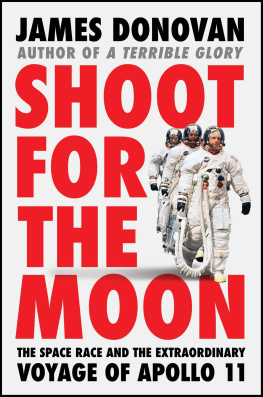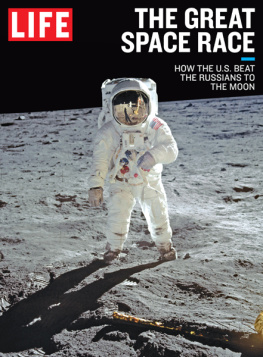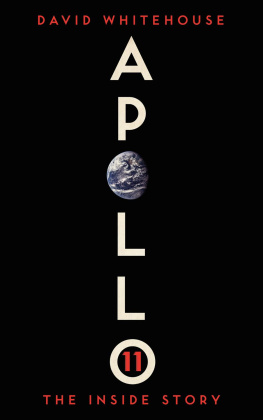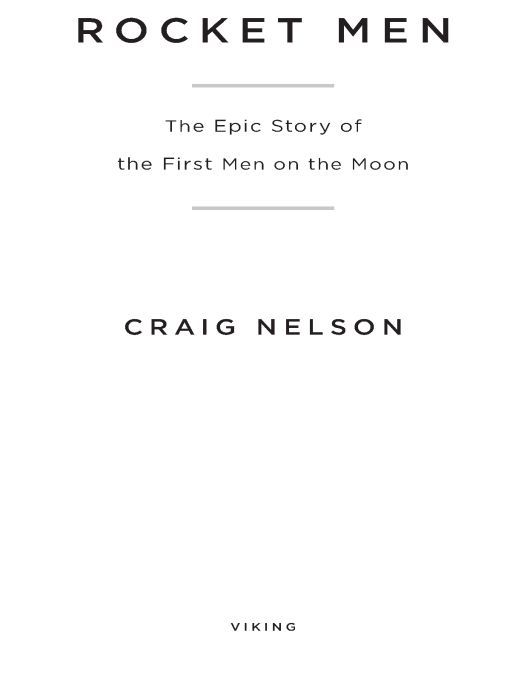Table of Contents
ALSO BY CRAIG NELSON
Thomas Paine
The First Heroes
Lets Get Lost
Dedicated to the 400,000 men and women of Apollo.
You made the dream come true.
Then what am I [when flying]the body substance which I can see with my eyes and feel with my hands? Or am I this realization, this greater understanding which dwells within it, yet expands through the universe outside; a part of all existence, powerless but without the need for power; immersed in solitude, yet in contact with all creation?
Charles Lindbergh, The Spirit of St. Louis
Ad astra per aspera
A rough path leads to the stars.
Apollo 1 Memorial, Kennedy Space Center
In 1969, a few months after Apollo 11 landed on the Moon, Rhode Islands Senator John Pastore was interrogating Fermilab physicist Robert Wilson at a Senate hearing on whether the federal government should spend $250 million to build a new collider. The senator wanted to know, would this collider add to the security of the country?
No sir, I dont believe so, Wilson answered.
Senator Pastore: Nothing at all?
Mr. Wilson: Nothing at all.
Senator Pastore: It has no value in that respect?
Mr. Wilson: It only has to do with the respect with which we regard one another, the dignity of men, our love of culture.... It has to do with, are we good painters, good sculptors, great poets? I mean all the things we really venerate in our country and are patriotic about.... It has nothing to do directly with defending our country, except to make it worth defending.
PART I
Behemoth
On May 20, 1969, at 12:30 p.m. EST, a 363-foot, thirty-story-high black-and-white Saturn V rocket known as AS-506 was painstakingly trundled five miles across the raging heat and searing green of central Floridas eastern coast by an eleven-man Kennedy Space Center crew aboard the worlds largest land vehicle, a six-million-pound, tank-wheeled crawler out of NASAs Vehicle Assembly Building, itself a 129-million-cubic-foot edifice so massive that its steel accordion doors were forty-five stories high and, without its ten-thousand-ton air conditioner, interior clouds would form under its 525-foot-high ceiling... and it would rain. An enormous creation of white ship and red derrick, the rocket and its mated launch tower, a twelve-million-pound engineering and technological goliath, moved so slowly from where they had been assembled to their destination that progress could not be tracked by human eye. Instead, they would be noted at one point, and then a few hours later at another, the sight accompanied by a small shock, the shock of a great red-white-and-black skyscraper coming to life and advancing, imperceptibly, across the Florida sawgrass swampland.
The crawler at the rockets base was, in itself, such a dramatic piece of engineering legerdemain that it even impressed Kennedy launch operations director (and former West Point tackle) Rocco Petrone: Somebody in our shop came up with the idea of using giant tracked machines like those used in strip mining. What evolved was the unique crawler or, more politely, transporter. As built by [Ohios] Marion Power Shovel Company, the crawler took shape with eight tracks, each seven by forty-one feet, with cleats like a Sherman tank, except that each cleat weighed a ton. Mounted over these eight tracks was the platform, bigger than a baseball diamond, on which the Apollo-Saturn V and its mobile launcher would ride majestically from VAB to pad at one mile per hour. The package weighed nine thousand tons, two-thirds cargo, one-third crawler.
NASA itself manufactures very little of what it flies; instead, for Apollo 11, it relied on twelve thousand American corporations and four hundred thousand employees, almost all of whose output ended up at the Vehicle Assembly Building (VAB), which Petrone called an intricate machine that assembled the vehicle in its final phases. The Saturn V rockets bottom stage was built by Boeing at the Michoud Assembly Factory in New Orleans, barged down the Mississippi River, around the Florida peninsula, and through a series of canals to the VABthe great, shimmering reflecting pool that has graced so many NASA launch photos is in fact a turning basin for its arriving barges. The boosters stage two was built by North American Rockwell in Seal Beach, California, shipped through the Panama Canal to be test-fired at NASAs Mississippi facility, and then shipped to Kennedy. Stage three originated with Douglas in Sacramento, California, and was flown to Kennedy via Aero Spacelines specially manufactured version of Boeing Stratocruiser: the Super Guppy. The Guppy had been created solely through the efforts and finances of Aeros founder, John Conroy, who against many doubters insisted he could turn a generic cargo jet into a carrier that would fit NASAs stratospheric requirements; the agency had previously tried using zeppelins to transport its enormous rockets, an experiment that did not end well. That same plane carried the Command and Service Modules from North Americans Downey, California, plant, while the Lunar Module, as light a ship as any in history, traveled by train and truck from Grummans factory in Bethpage, New York, to Florida.
After seeing their bucket arrive factory-fresh from manufacturer North American Aviation in its blue packing sheet, the Apollo 9 crew had named their Command Module Gumdrop, and their Lunar Module Spider, for its arachnid appearance. When Apollo 10 in turn christened their ships Charlie Brown and Snoopy, assistant administrator for public affairs Julian Scheer wrote Manned Spacecraft Center director George M. Low to suggest that perhaps the Apollo 11 crew might consider being less flippant in naming their craft. Scheer, in fact, would end up suggesting Columbia for the CM, while Jim Lovell, Neil Armstrongs backup commander, would recommend Eagle for the LM. Both ideas would be adopted.
As each rocket part arrived at Kennedy, it was individually inspected, mated to its nethers in the VAB, and the whole then given a plugs-in test, a compete simulation of every dial, switch, pump, light, fan, valve, and motor that would be used on the mission. The near-sadism that had marked the earliest rounds of psychological and physical testing of the Mercury astronauts now found its match in the torturing of these machines. Columbia and Eagle, and their environmental, communications, electrical, and rocket subsystems, were subjected to fire, ice, collision, shocks, vibration, dust, rain, and 587,500 forms of inspection.
After reaching the distant loneliness of Pad 39As octagon-shaped concrete slab built hard against the sea, Saturn V-Apollo 11 underwent a flight readiness test. Then its tanks were pumped with liquid oxygen, liquid hydrogen, jet-grade kerosene, and hydrogen peroxide at ten thousand gallons a minute for four hours and thirty-seven minutes, followed by the five-day, ninety-three-hour countdown to liftoff. At every step, a horde of technicians swarmed over the great leviathan, pumping and probing, tightening and reconnecting, moaning with frustration, or quietly moving on to the next of the tasks that seemed as endless as the stars in the night. NASAs astronauts may have been widely admired for their daring and their courage, but these pad workers, under constant threat from enormous machines and lethal gases, were just as brave. Together they shared a utopian and impossible dream: that they would imminently send, for the first time in history, men to the Moon.
















